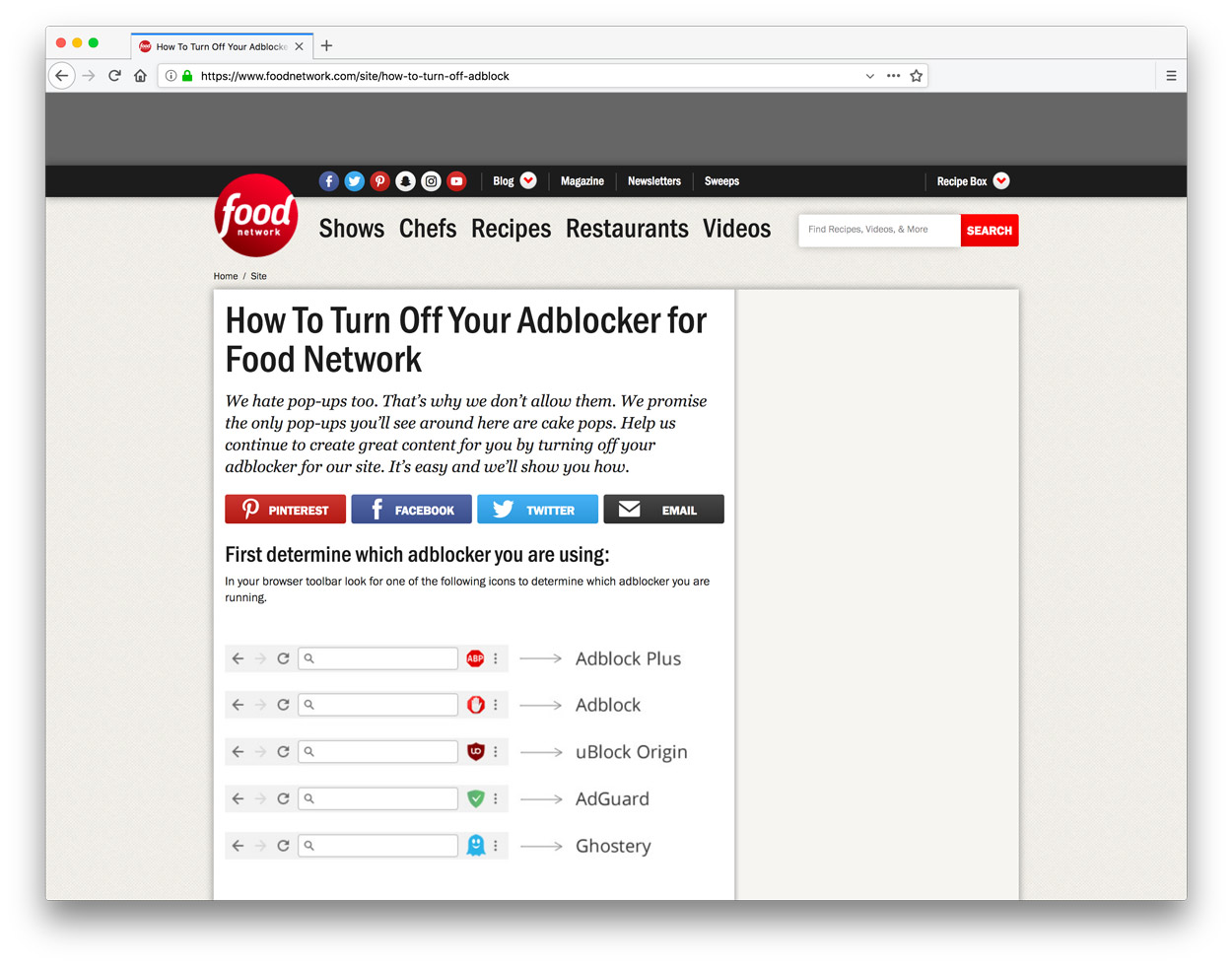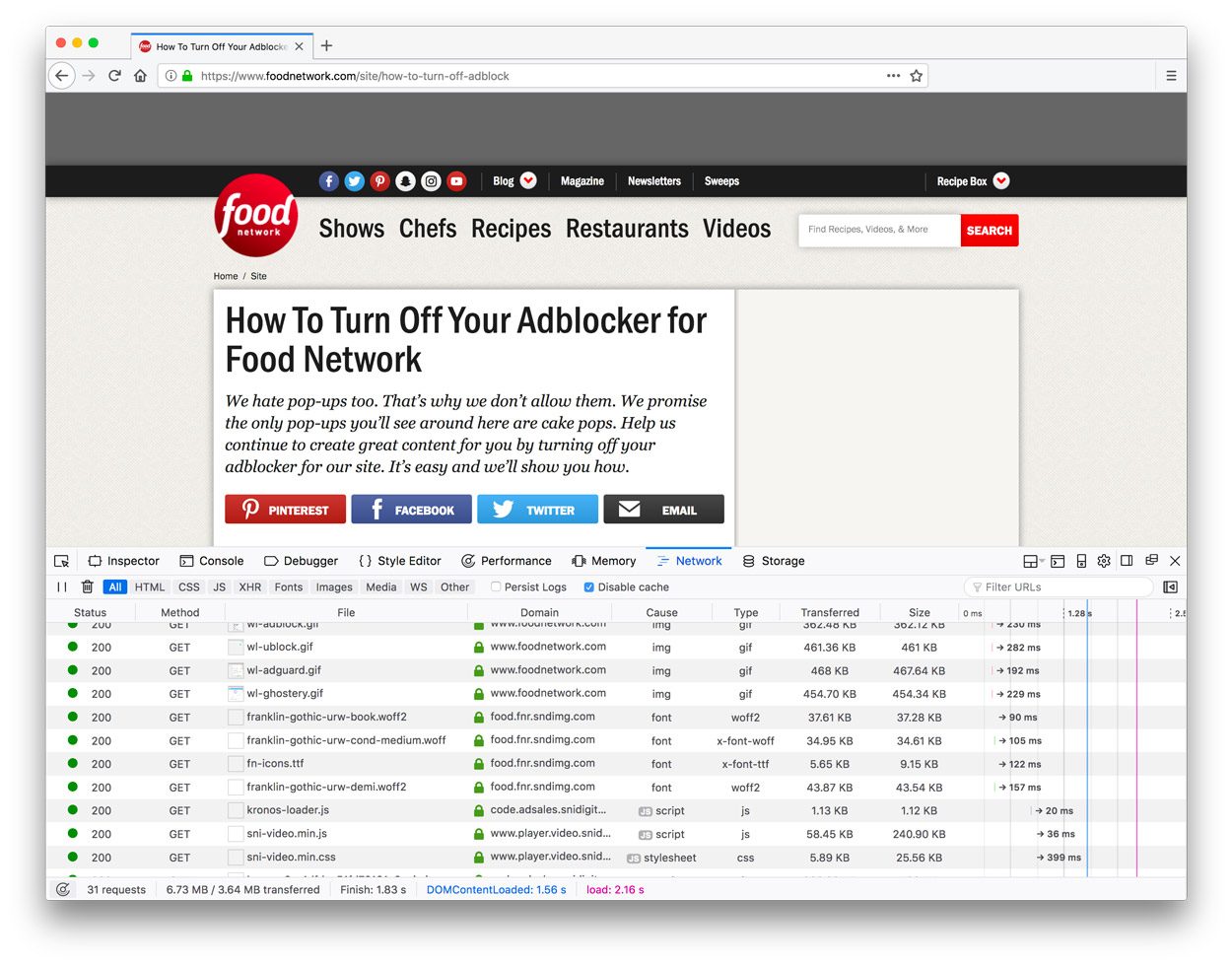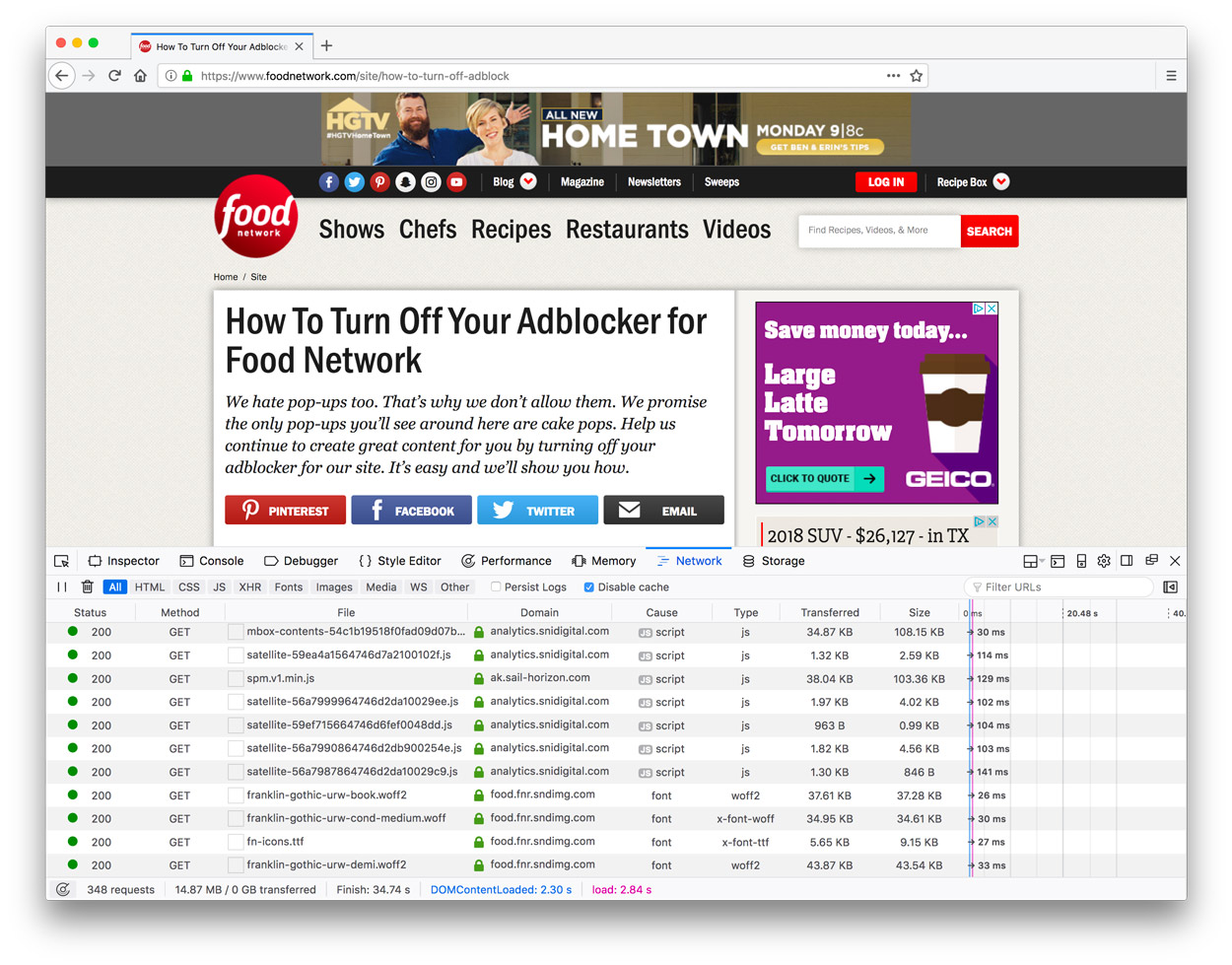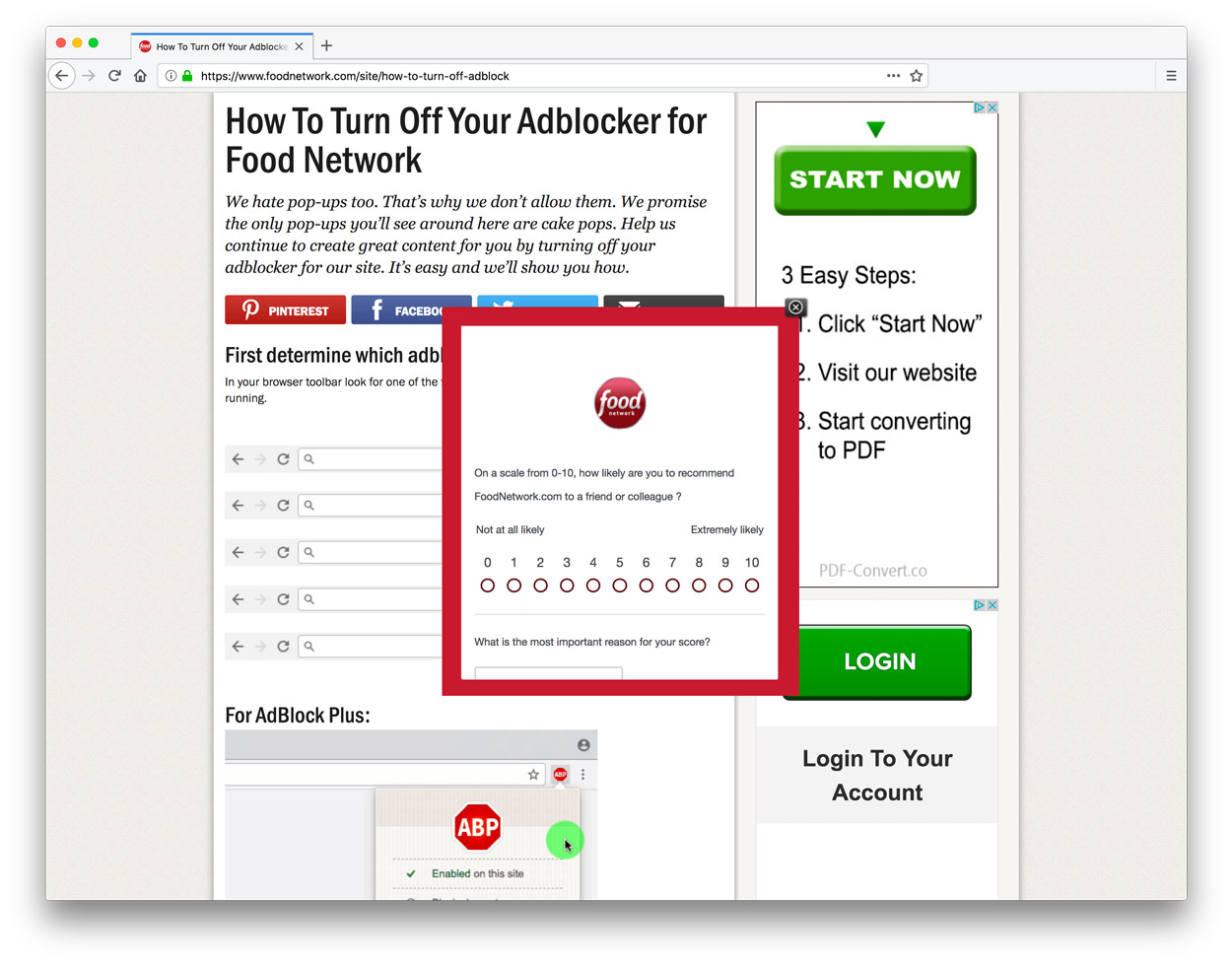Please Turn Off Your Ad Blocker
It’s common for sites to ask users to turn off ad blockers. I often happily oblige to support sites I value. I’d likely oblige more often if the differences in experience weren’t so extreme. Here’s one example (via Sam Kap):

Not an unreasonable request: “Turn off your ad blocker so we can continue to make content. We won’t hit you with pop-up ads.” But note my “before” experience:

After turning my ad blocker off, the experience changed dramatically:

Not only was the page heavier and slower to load, but there was also a lot of scroll-jank and processor lag. Because the differences are so huge, the request was starting to seem less reasonable. And to top things off, I got a pop-up anyways:

Sites with ads are one thing. Sites with such a high amount of ads, trackers, analytics, and A/B testing resources that load via a long list of third-parties are something else. I don’t think Food Network is unique here, but it is a good example of what happens when third-party inclusions get out of hand.
When implementing third-party scripts/services, I think organizations need to:
- Monitor page speed and processor lag
- Evaluate UX implications
- Avoid redundant scripts/services
- Establish criteria for measuring cost/benefits of each script/services
Maybe most organizations do this already, and perhaps it still makes business sense for them to include everything. I hope not.